
Gloucestershire is a county in South West England. The county comprises part of the Cotswold Hills, part of the flat fertile valley of the River Severn, and the entire Forest of Dean.

Bristol Parkway, on the South Wales Main Line, is in the Stoke Gifford area in the northern suburbs of the Bristol conurbation. It is 112 miles (180 km) from London Paddington. The station was opened in 1972 by British Rail, and was the first in a new generation of park and ride/parkway stations. It is the third-most heavily used station in Western England, after Bristol Temple Meads and Bath Spa. There are four platforms, and a well-equipped waiting area. The station is managed by Great Western Railway, who provide most of the trains at the station, with CrossCountry providing the rest.
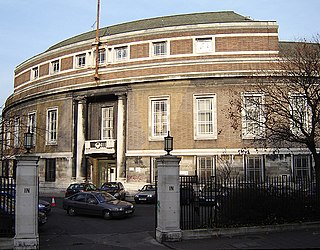
Stoke Newington is an area occupying the north-west part of the London Borough of Hackney in north-east London, England. It is five miles northeast of Charing Cross. The Manor of Stoke Newington gave its name to Stoke Newington the ancient parish.

South Gloucestershire is a unitary authority area in the ceremonial county of Gloucestershire, South West England. South Gloucestershire was created in 1996 from the northern section of the county of Avon, which was abolished at that time.
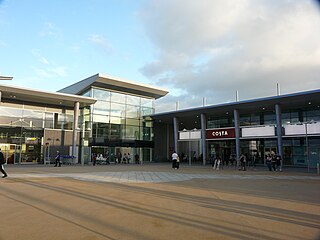
Bradley Stoke is a town in South Gloucestershire, England, situated 6 miles north east of Bristol, It is near the Severn Estuary of the Bristol Channel, Bradley Stoke is bordered by three motorways; the M5 to the north, the M4 to the east and the M32 to the south.
Dursley is a market town and civil parish in southern Gloucestershire, England, situated almost equidistantly between the cities of Bristol and Gloucester. It is under the northeast flank of Stinchcombe Hill, and about 3+3⁄4 miles (6.0 km) southeast of the River Severn. The town is adjacent to Cam which, though a village, is a slightly larger community in its own right.

Winterbourne is a large village in South Gloucestershire, England, situated just beyond the north fringe of Bristol. The village had a population of 8,965 according to the 2011 census. The Civil Parish of Winterbourne is centred on the village and includes the neighbouring communities of Winterbourne Down, Hambrook and Frenchay. To the north-east is the village of Frampton Cotterell and to the west lies the new town of Bradley Stoke.

Filton is a town and civil parish in South Gloucestershire, England, 5.5 miles (9 km) north of Bristol. Along with nearby Patchway and Bradley Stoke, Filton forms part of the Bristol urban area and has become an overflow settlement for the city. Filton Church dates back to the 12th century and is designated a Grade II listed building.
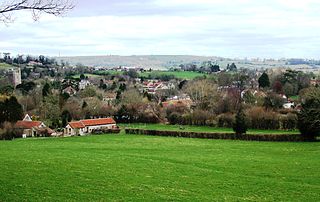
Chew Stoke is a small village and civil parish in the affluent Chew Valley, in Somerset, England, about 8 miles (13 km) south of Bristol and 10 miles north of Wells. It is at the northern edge of the Mendip Hills, a region designated by the United Kingdom as an Area of Outstanding Natural Beauty, and is within the Bristol/Bath green belt. The parish includes the hamlet of Breach Hill, which is approximately 2 miles (3.2 km) southwest of Chew Stoke itself.
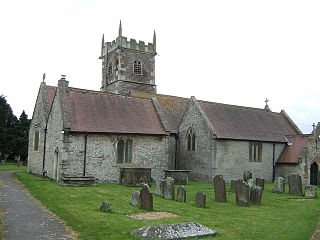
Stoke Gifford is a village and parish in South Gloucestershire, England, in the northern suburbs of Bristol. It had around 11,000 residents at the 2001 census, increasing to 15,494 at the 2011 census. It is home to Bristol Parkway station and Stoke Gifford depot, on the London-South Wales railway line, and the Bristol offices of Aviva which took over Friends Life in 2015, Hewlett Packard and the University of the West of England. The parish includes neighbouring Little Stoke, Harry Stoke and Stoke Park. The parish borders Filton, to the south-west, Patchway to the north west, Bradley Stoke to the north and Winterbourne and Hambrook to the east. To the south Stoke Gifford is served by the Bristol Ring Road, south of this a large green area known as the 'Green Lung' stretches to the inner city area of St Werburghs.

Bedminster is a district of Bristol, England, on the south side of the city. It is also the name of a council ward, which includes the central part of the district and some other areas.

Bristol North West is a constituency represented in the House of Commons of the UK Parliament since 2017 by Darren Jones of the Labour Party.

South Gloucestershire and Stroud College, also known as SGS College, is a college of further education and higher education based in South Gloucestershire and Stroud, England. It was established in February 2012 following the merger of Filton College and Stroud College. The college is made up of six campuses located in and around Bristol, North Bristol, South Gloucestershire and Stroud.

Frampton Cotterell is a village and parish, in South Gloucestershire, South West England, on the River Frome. The village is contiguous with Winterbourne to the south-west and Coalpit Heath to the east. The parish borders Iron Acton to the north and Westerleigh to the south-east, the large town of Yate is 2.1 miles (3.4 km) away. The village is 7.5 miles (12 km) north-east of the city of Bristol.
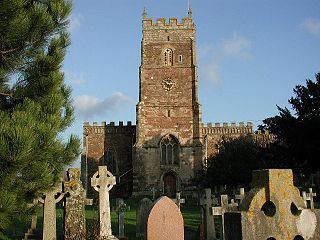
Portbury is a village and civil parish in Somerset, England within the unitary authority of North Somerset. The parish includes the hamlet of Sheepway which is situated on the moorland at the northern edge of the Gordano valley, between the Gordano services on the M5 motorway and Portishead, near the Royal Portbury Dock. The parish has a population of 827.

Calstock is a civil parish and a large village in south east Cornwall, England, United Kingdom, on the border with Devon. The village is situated on the River Tamar 6 miles (9.7 km) south west of Tavistock and 10 miles (16 km) north of Plymouth.

Frenchay is a village in the County of South Gloucestershire, England, and the Civil Parish of Winterbourne. It is on the outskirts to the north east of the city of Bristol.

The Berkeley family is an ancient English noble family. It is one of only three families in England that can trace its patrilineal descent back to Anglo-Saxon times. The Berkeley family retains possession of much of the lands it held from the 11th and 12th centuries, centred on Berkeley Castle in Gloucestershire, which still belongs to the family.

Sir Richard Berkeley of Stoke Gifford, Gloucestershire was MP for Gloucestershire in 1604. He had previously served as Sheriff of Gloucestershire in 1564, and as Deputy Lieutenant of Gloucestershire. He was knighted by Queen Elizabeth I in 1568. In 1595 he was appointed Lieutenant of the Tower of London. In 1599 he was appointed custodian of Robert Devereux, 2nd Earl of Essex, who was kept under house arrest at Essex House in London. He died in 1604, whilst serving as MP, and was buried in The Gaunts Chapel, Bristol, where exists an effigy of him, which chapel had been founded in 1220 by Maurice de Gaunt, a member of the Berkeley family.

Stoke Gifford depot is a railway depot built for AT300 units from the Hitachi A-train procured under the Intercity Express Programme. The depot is situated between Filton and Stoke Gifford at a junction intersection of the Cross Country Route, South Wales Main Line and the Filton to Avonmouth Docks line. It is operated by Agility Trains as part of its contract to maintain the Class 800 fleet operated by Great Western Railway.




















